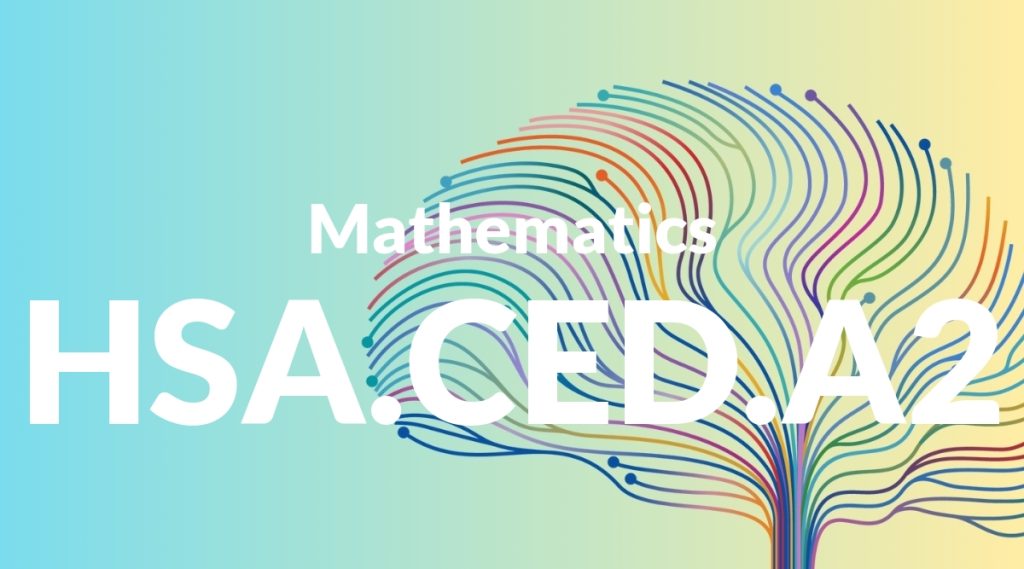Standard: HSA.CED.A2 – Create equations in two or more variables to represent relationships between quantities; graph equations on coordinate axes with labels and scales.
Grade level: High School: Algebra
Subject: Mathematics
Domain: Creating Equations
Teacher Overview
This standard focuses on creating equations in two or more variables to represent relationships between quantities. It is crucial for students to understand how to graph these equations on coordinate axes with appropriate labels and scales. This skill is fundamental in algebra and prepares students for more advanced topics in mathematics. Students should be comfortable with solving linear equations and graphing single-variable equations. They should also understand the basics of coordinate planes, including plotting points and interpreting axes.
Mastering this standard will enable students to solve systems of equations and inequalities, and apply these concepts to complex, real-world scenarios. This knowledge is essential for higher-level mathematics and various applications in science and engineering.
Common Misconception 1
A common misconception is that the scales on the axes must always be the same. This is incorrect because different variables may require different scales to accurately represent the data.
Intervention 1
To address this misconception, provide students with diverse examples where different scales are used. Engage them in activities that require them to choose appropriate scales based on the context of the problem.
Common Misconception 2
Another misconception is that all relationships between variables are linear. This is not true as relationships can also be quadratic, exponential, or of other forms.
Intervention 2
Introduce students to various types of relationships by using real-world examples and practice problems. Emphasize the differences between these relationships and how to identify them.
Prerequisite Knowledge
Students should have a foundational understanding of linear equations, the ability to solve single-variable equations, and basic graphing skills including plotting points on a coordinate plane.
Subsequent Knowledge
After mastering this standard, students will be able to analyze and solve systems of equations, understand inequalities in multiple variables, and apply these skills to more complex mathematical models and real-world situations.
Instructional Activities
- Graphing real-world data sets and analyzing trends
- Creating and solving equations based on word problems
- Using graphing calculators or software to visualize equations
- Collaborative group projects to model real-life scenarios
- Interactive games and challenges to reinforce graphing skills




